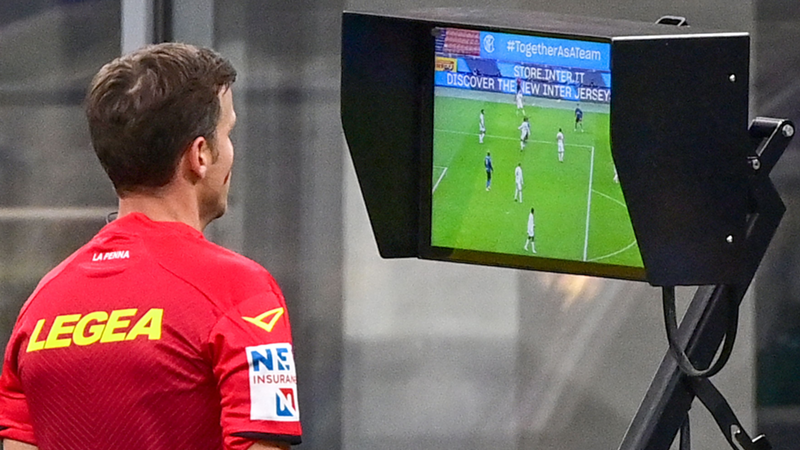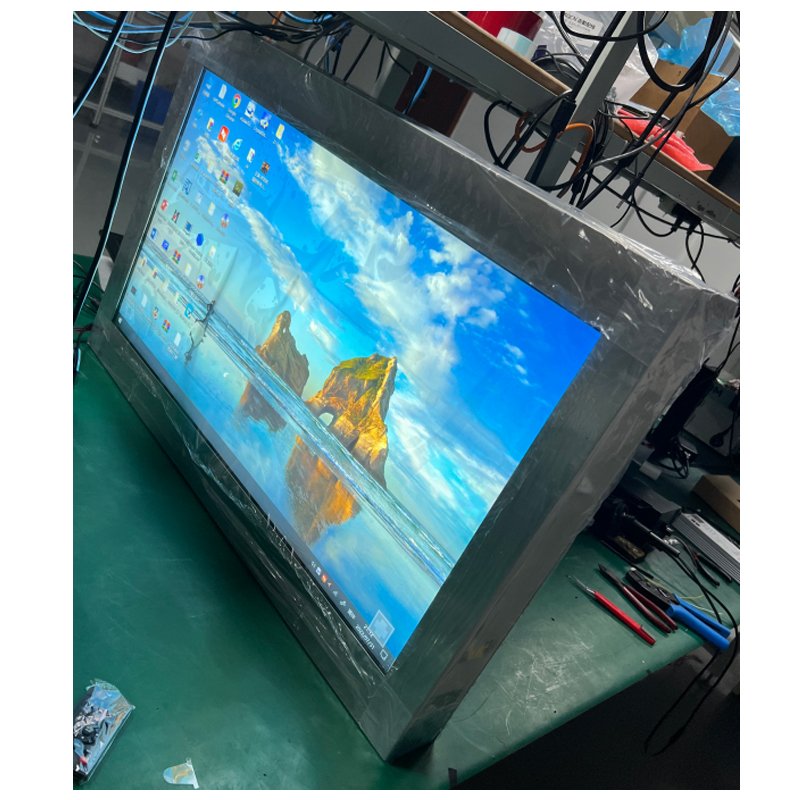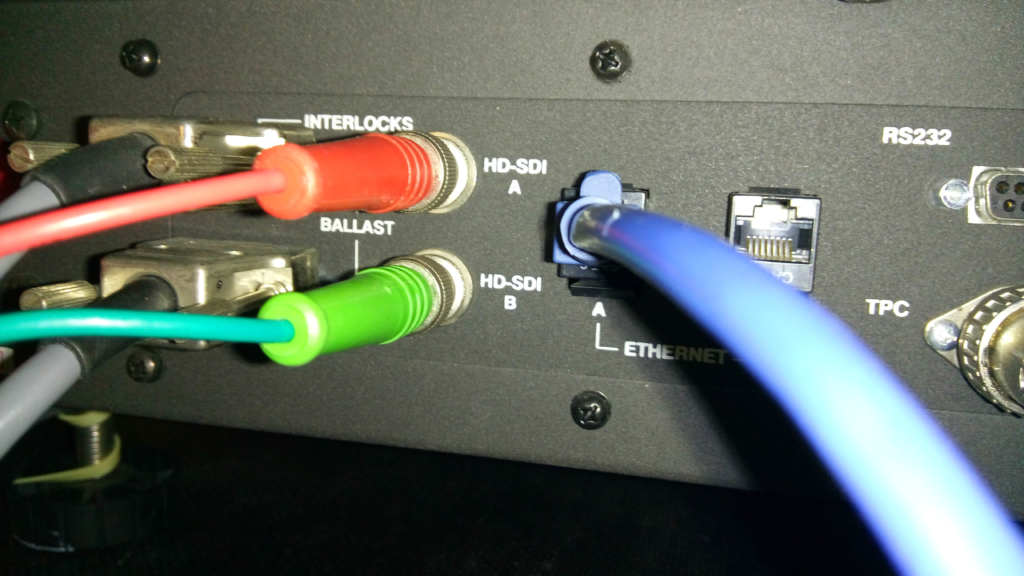SDI-Serial Digital Interface, widely used in SDI encoders, SDI converters and other equipment, which has been applied to radio and television fields, security monitoring. And we have witnessed the development of the video standard with the ultra high definition standard from SD-SDI, HD-SDI to 3G-SDI, 6G-SDI, 12G-SDI and 24G-SDI. At the same time, it has also promoted an era of a new digitized video display in both monitoring and radio and television fields. Below we discuss the difference between the various SDI interface.
Definition:
SDI: Serial Digital Interface (SDI) is a family of digital video interfaces first standardized by SMPTE (Society of Motion Picture and Television Engineers) in 1989. For example, ITU-R BT.656 and SMPTE 259M are defined for broadcast-grade video.
SD-SDI: The SD-SDI standard support the 270 Mb/s bit rate. SD-SDI is used to transmitting low-resolution PAL compatible video 720 * 576 @ 25fps and uses a clock rate of 27 MHz. In 1994, ITU-R (formerly International Radio Consultative Committee) released Recommendation BT.656-2, incorporating the new serial digital interface defined in EBU Tech.3267 and SMPTE 259M, which uses 10-bit transmission and non- Zero Reverse (NRZI) encoding. The clock rate was 270 Mb / s when transmitting a 4: 2: 2 level signal from ITU-R BT. 601 (part A), at which point the SD-SDI standard was defined, which is today’s SDI.
HD-SDI: The standard known as the HD Serial Digital Interface (HD-SDI) is standardized in SMPTE 292M; Although this standard is known as the 1.5 Gb / s interface, the bit rates supported by HD-SDI are actually 1.485 Gb / s and 1.485 / 1.001 Gb/s. OPTCORE provides a wide line of HD-SDI SFP transceiver for the special broadcast application.
3G-SDI: This standard is known as the 3 Gb/s interface, but the actual bit rates are 2.97 Gb / s and 2.97 / 1.001 Gb / s. 3G-SDI supports several different mapping levels, as described in the SMPTE ST425-1 standard. These levels are called A, B-DL, and B-DS. Like the HD-SDI standard, the 3G-SDI supports 3G-SDI CRC generation and checking as well as line number insertion and capture.
6G-SDI: This standard defines a bit-serial data structure, electrical signal and coaxial cable interface for the transport of signals with a total payload of 5.940 Gb/s or 5.940/1.001 Gb/s. This standard also specifies the electrical and physical characteristics of coaxial cables and connectors. This standard defines several mapping modes for the carriage 2160-line and 1080-line image formats and associated ancillary data into a Single-link 6 Gb/s [nominal] SDI bit-serial interface.
12G-SDI: The 12G-SDI is an SDI standard developed to support higher resolution, frame rate, and color fidelity. It provides four times the bandwidth of HD, carrying 12Gbps, making it ideal for the 4K 60p format. This is not new, UG has been developed 6G / 12G since 2012, but has not been approved by the standard governing body SMPTE (Society of Motion Picture and Television Engineers) under the SMPTE ST-2082 draft name. Click to learn more about 12G-SDI.
24G-SDI: also known as UHD-2 or 24G UHD-SDI, defined in SMPTE ST-2083, this standard supports 8k 120p resolution.
Standards:
| Standard | Name | Introduced | Bitrates | Example video formats |
| SMPTE 259M | SD-SDI | 1989 | 270 Mbit/s, 360 Mbit/s, 143 Mbit/s, and 177 Mbit/s | 480i, 576i |
| SMPTE 344M | ED-SDI | 540 Mbit/s | 480p, 576p | |
| SMPTE 292M | HD-SDI | 1998 | 1.485 Gbit/s, and 1.485/1.001 Gbit/s | 720p, 1080i |
| SMPTE 372M | Dual Link HD-SDI | 2002 | 2.970 Gbit/s, and 2.970/1.001 Gbit/s | 1080p60 |
| SMPTE 424M | 3G-SDI | 2006 | 2.970 Gbit/s, and 2.970/1.001 Gbit/s | 1080p60 |
| SMPTE ST-2081 | 6G-SDI | 2015 | 6 Gbit/s | 2160p30 |
| SMPTE ST-2082 | 12G-SDI | 2015 | 12 Gbit/s | 2160p60 |
| SMPTE ST-2083 | 24G-SDI | 24 Gbit/s | 2160p/4k@120,8k@60 |
When do you need an SDI port?
- Marine project: Advanced equipment, real-time transmission of pictures, no delay;
- Live broadcast display: Real-time transmission of camera online video for the referee to watch;
- Medical equipment: It will be more accurate, and fast for some medical equipment.
- Others…

If No SDI port, it is ok?
Yes, HDMI, VGA, DVI is ok for signal, but not that fast, not a real-time, may be a little delay for pictures or video.
Related Products:

32-inch Stainless Steel Monitor 2500nits Full IP67 Screen with 6G-SDI Port for Football Live Broadcast Referee (HV-M320S)
Do you want to extend the service life of your monitor or panel pc?
If there is a case: you have a black monitor or panel pc with FULL IP67 Waterproof. You might not be able to repair it by yourself, but it’s such a waste to throw it away.
Now, no worries. Our engineer designed a new model with easy uninstallation & install…
Categories:
- Accessories44 products
- Camera11 product
- Stainless Steel Keyboard11 product
- VESA Brackets22 products
- Customized Devices3131 products
- Customized Android Touch Tablets77 products
- Customized Touch Monitors33 products
- Customized Touch PCs1111 products
- NFC/RFID/Camera Panel PC1111 products
- Industrial Box PC2424 products
- 4U BOX PC11 product
- Industrial Box/Mini PC2222 products
- IP65 IP67 Waterproof BOX PC11 product
- Industrial PC8888 products
- Weighing Device Panel PC22 products
- 1000nits Panel PC for Kiosk1212 products
- 3mm Bezel Touch PC2020 products
- Android Touch Tablet PC1010 products
- HMI 2nd Industrial Panel PC77 products
- HMI Industrial Panel PC99 products
- IP65/IP67 Waterproof PC2121 products
- Open Frame Touch PC22 products
- Rugged Tablet & Laptop77 products
- Stainless Steel Series2525 products
- Stainless Steel Touch Monitor99 products
- Stainless Steel Touch PC1313 products
- Stainless Steel Android PC33 products
- Touch Screen Monitors112112 products
- 1000nits Monitor for Kiosk1919 products
- 1000nits Monitor for Marine1414 products
- 3mm Bezel Touch Monitor2020 products
- HMI High-end Touch Monitor1414 products
- HMI PLC LCD Monitor11 product
- IP65/IP67 1000nits Monitor3636 products
- Open Frame Touch Monitor1414 products


